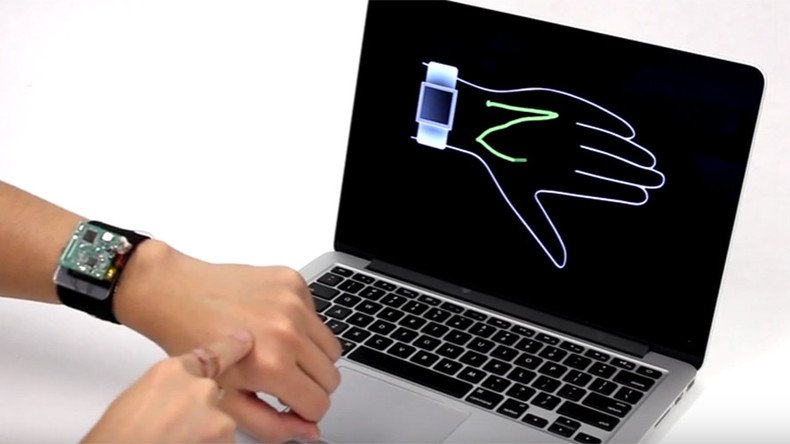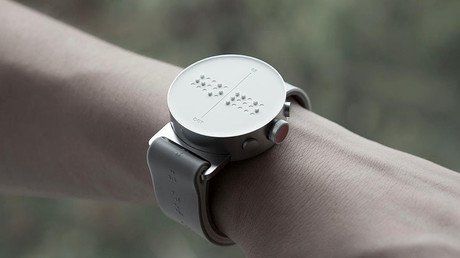US team turns arm skin into touchpad with new technology

Navigating mobile devices through your skin is not a sci-fi gimmick anymore, thanks to US researchers and their new device called SkinTrack, which takes the concept literally, using skin as a touchpad.
The Future Interfaces Group, a research lab at Carnegie Mellon University, thinks that your arm ought to be something more than just a body part. And all it takes is a ring on your finger and a smartwatch on your wrist.
SkinTrack, a wearable device revealed Thursday, consists of two pieces of hardware – a ring and a sensor band that communicate with each other via high-frequency electrical signals and electrodes.
Google wants your blood…literally: Patent filed for needle-free blood-sampling smartwatch https://t.co/8GkshypXG8pic.twitter.com/Iqg5olIxgc
— RT (@RT_com) December 6, 2015
Gierad Laput, a CMU graduate student and one of the researchers, said SkinTrack works on a similar principle to that of cell towers triangulating signals to figure out a phone’s location.
When the ring emits a signal, it spreads across the skin and the wristband picks it up through electrodes installed inside, turning the arm or hand into a touchpad or a sensor keypad. One of its especially cool and useful features is that the system is not obstructed by clothes.
The team posted a demo video showing a SkinTrack user performing side-to-side and up-and-down swiping gestures just like those made when scrolling on a smartphone.
“The great thing about SkinTrack is that it’s not obtrusive; watches and rings are items that people already wear every day,” said Yang Zhang, a first-year Ph.D. student at CMU who worked on the technology, according to the Verge.
The system can recognize taps like you would make in placing a phone call, as well as swipes, which can be convenient in rearranging apps on a desktop or playing games. It also understands simple handwriting.
For example, “writing” the letter “N” on your skin would launch news apps, while tracing the letter “S” would put a phone call into silent mode.
The researchers got SkinTrack to successfully recognize when the finger was making contact with the skin 99 percent of the time.
The possibilities here seem endless, but there are some obstacles the team needs to overcome to make the device more efficient. For now, the proof-of-concept prototype has some trouble with power consumption and charging. Wet skin and constant body movements can also affect the signal.
The prototype is fairly bulky, as the ring has hefty electronics attached to it and the wristband is thick and wide, but the inventors don’t seem to think these will be long-term problems.
“As our approach is compact, non-invasive, low-cost, and low-powered, we envision the technology being integrated into future smart watches, supporting rich touch interactions beyond the confines of the small touchscreen,” the team said.
Despite using high-frequency electrical signals and electrodes, SkinTrack is 100 percent safe, the researchers stress.
“The technology is safe. No evidence suggests that the radio frequency signals used by SkinTrack have any health effects. The body is commonly excited by daily appliances – everything from the tiny amounts of current drawn from the finger by touchscreens to the electromagnetic noise emanating from fluorescent lights – with no ill effects,” they said, according to the Verge.












